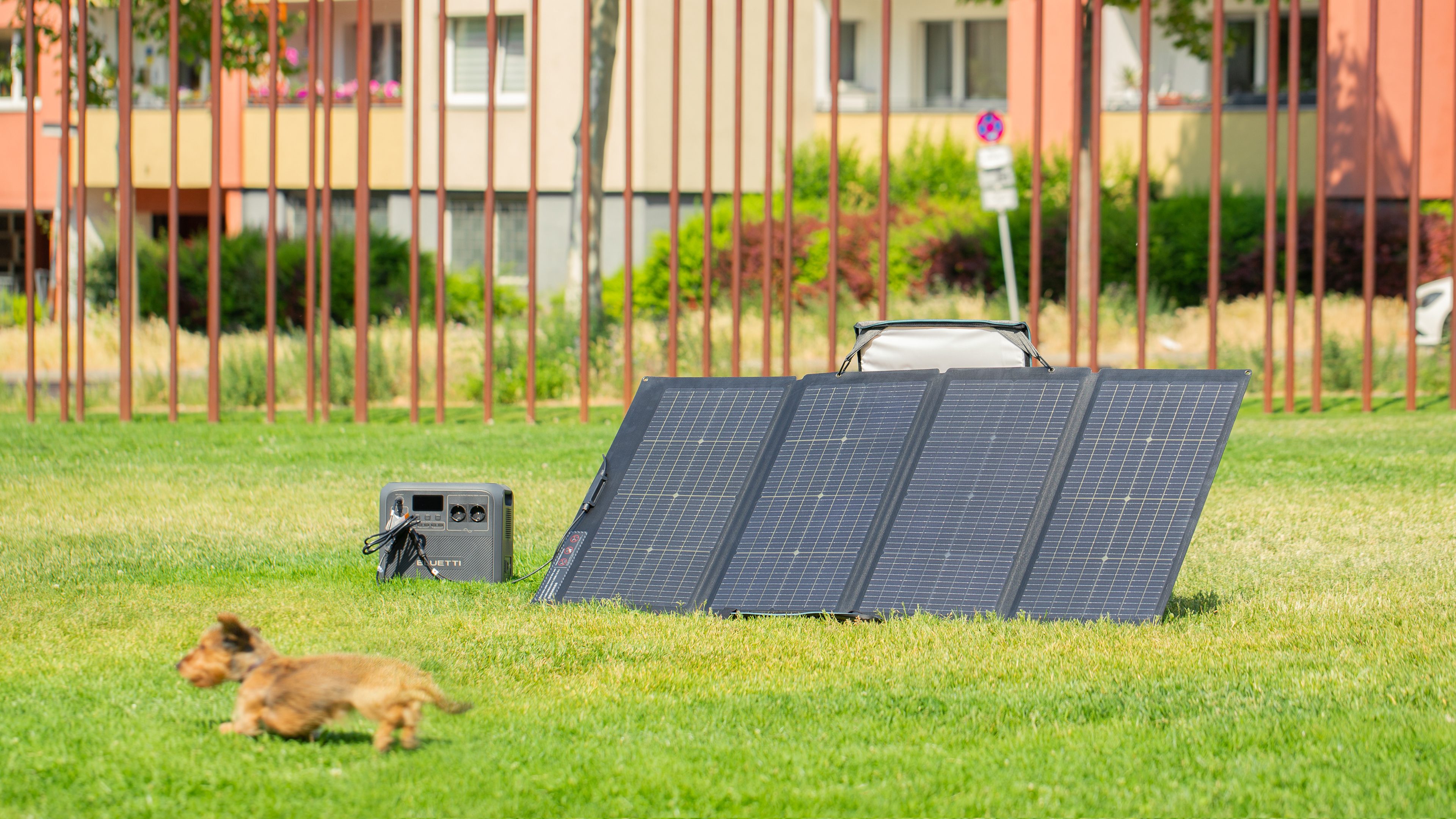
Ecoflow’s 220 W solar panel has a unique feature—it is bifacial. What does this mean? The solar panels will be able to generate solar power on both sides. Thanks to its bifacial design, Ecoflow does not rely on stands for the panel. Instead, the carrying bag acts doubles up as the holder for the module whenever you are outdoors. In our review, nextpit will tell you whether these unique features are simply gimmicks or whether they are really useful in everyday use.
The EcoFlow 220W Bifacial Portable Solar Panel in a nutshell
The bifacial 220 W solar panel from Ecoflow works great in many aspects. It is comfortable to carry around and the carrying bag doubles up as a stand for the solar panels whenever you are outdoors, be it on a camping trip or a boat, where there is a power station around to store all the energy generated by these panels. Assembly can be done in a jiffy even with just one person.
The only gripe I have is when one opens the solar panel—it feels somewhat stiff around the hinges. Finally, thanks to the eyelets, you can easily attach the panel to your balcony as part of your balcony power station.
Despite the bifacial design, the 220 W solar panel from Ecoflow delivers less solar power in the practical review than, for instance, the Bluetti PV200 (read review). The 220 W solar panel costs $649 based on the recommended retail price. If you are to act quickly, you can save a lot of money: Currently, the panel is available for $549.
Design and performance
The Ecoflow 220W Bifacial Solar Panel is easy to transport thanks to the carrying case. Assembly is an uncomplicated affair and can be completed quickly. In addition, the solar panel is protected against water and dust since it is IP68 certified.
What I liked:
- IP68 certified, making it resistant to dust and water.
- Practical dual functionality of the carrying bag.
- Four eyelets are available.
What I disliked:
- Panel feels a bit stiff when unfolded.
The solar panel tips the scales at 9.6 kg and can be easily transported thanks to the carrying bag. The panel does not have any feet. Instead, you can use the carrying bag as a holder for the solar panel when out camping or on your yacht.
The setup is simple and can be completed quickly without the help of another person: You only have to attach the panel to the carrying bag using two of the four included carabiners. However, the module makes a somewhat stiff impression during the setup process and when unfolding it. When fully opened, the solar panels take up quite a bit of space with dimensions measuring 82 × 182 × 25 cm.
The Ecoflow’s 220 W panel has fixed tilt angles unlike the Bluetti PV200 (review). In addition, the 220 W panel with the carrying bag—like most other foldable solar panels — is only moderately stable. If you are not tucked away in an area that is protected from strong winds, then I would highly recommend you secure the panel from flying away using the accompanying eyelets.
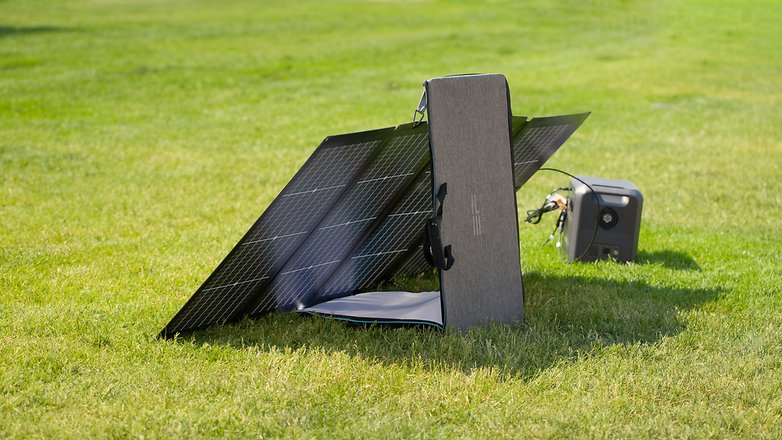
Ecoflow included four eyelets in the module, making the 220 W panel suitable not only as a mobile energy source on a camping trip but also as your balcony power plant. If you lack the necessary know-how, you should definitely read our guide on how to build your own balcony power plant.
Moreover, thanks to its IP68 certification, the panel can be exposed to rain without any issue and is also dust-resistant. Last but not least, Ecoflow attached its cables firmly to the panel and the 220 W solar panel relies on MC4 connectors. Ecoflow did not install additional charging ports, such as a USB port, in the panel.
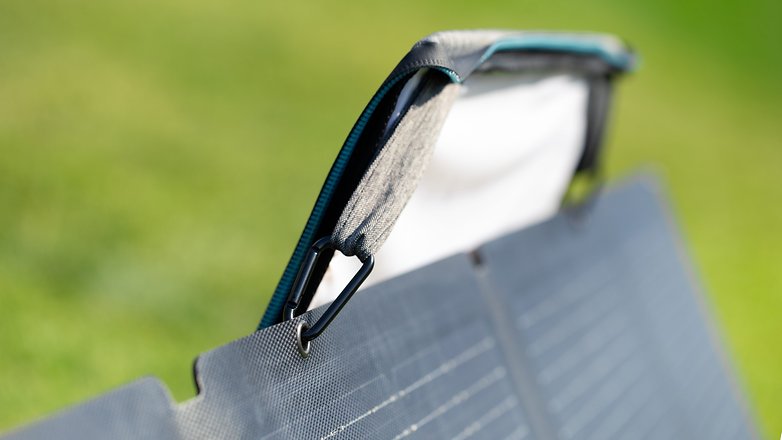
Solar panels and power
Ecoflow’s 220 W solar panel generates solar power on both sides due to its bifacial design. However, in our practical review, the panel does not charge faster than a normal 200 W panel from its competition. Moreover, the panel is suitable for camping trips as well as for your balcony power plant.
What I liked:
- Solar panel generates solar energy on both sides.
- It can be used on camping trips and as part of a balcony power plant.
What I disliked:
Ecoflow promises a maximum conversion rate of 23% for the 220W panel. This is important to know: The conversion rate indicates what proportion of sunlight the panel converts into solar energy. As a comparison, the manufacturer stated the efficiency of the Bluetti PV200 (review) at 23.4%.
The special feature of Ecoflow’s 220 W solar panel is its bifaciality. In other words, the panel generates solar energy on both the front and the back — so you also capture light that bypasses the panel and is reflected to its back.
There is a big difference in power between the front and the back in this process. Ecoflow stated the maximum power of the front to be 220 W—and Ecoflow promises up to 155 W power for the back. This makes a look at the test results all the more exciting.
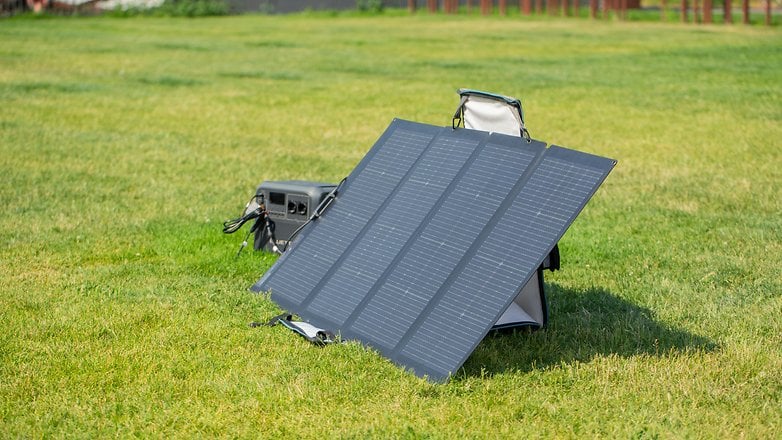
Here’s another little thing to consider: We conducted the practical review on June 8, 2023, in Berlin at temperatures of 25 degrees. During the test, we encountered good weather conditions of clear skies and sunshine.
To get a clearer picture, we tested the PV200 from Bluetti in addition to the 220 W solar panel from Ecoflow. As with the Bluetti PV200, we used the Bluetti AC180 as a test power station to log performance for the test of Ecoflow’s 220 W solar panel.
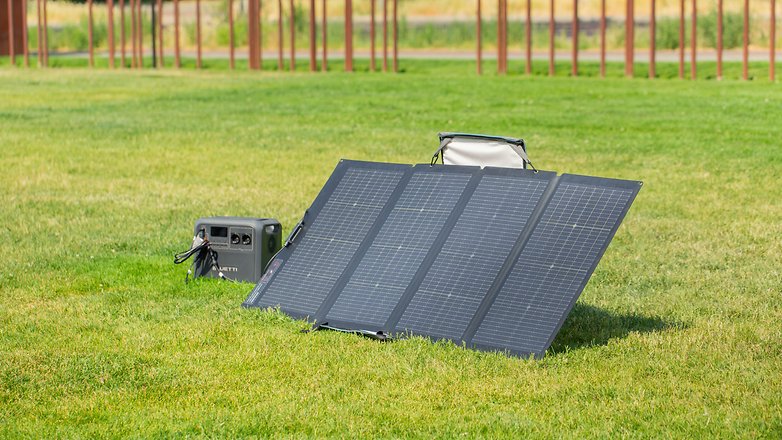
The 220 W solar panel from Ecoflow charged our review unit at 150 W all the way. At times, the power increased to 152 W. Just to compare: The Bluetti PV200 charges the AC180 at the same time with 157 W at peak, with short power drops to 154 W.
So, at such elevation, the Ecoflow panel has no power advantages over the Bluetti panel. Given the manufacturer’s mentioned conversion rates, we would have expected a bit more power from the Ecoflow panel at 220 W at 23% than from the Bluetti PV200 at 200 W and 23.4%.
One final note: At first glance, being 68 W below the rated power seemed to be rather disappointing. Nevertheless, when it comes to solar panels, you will have to bear in mind that the specified nominal power is the best possible result. Module orientation, increased material temperature, hazy skies, or other obstacles will always result in worse numbers. Normally, you achieve the best results shortly after midday in cold weather.
The conclusion
Whether it’s for a camping trip or out on a boat, Ecoflow’s 220 W bifacial solar panel is a great way to power your everyday devices whenever you are off the grid. However, we were hoping for a bit more punch, especially from the increased performance due to the bifacial design in the field test.
In summary, Ecoflow’s 220W solar panel is still a solid choice if you’re looking for a foldable solar panel. The nice thing is whenever you’re not camping, you can simply hang the panel on your balcony with the handy eyelets and let it generate energy.






